With the help of several sources, ChatGPT creates human-like material through an intuitive kind of AI learning. Implementing ChatGPT as a creative writing collaborator will be the best option for teams who must rapidly create a lot of material since they can swiftly produce initial drafts of vast information. These can help your team avoid spending time and resources on early drafts, which can cause sluggish manufacturing. While ChatGPT is a free service, many other AI authors charge a fee with a free trial.
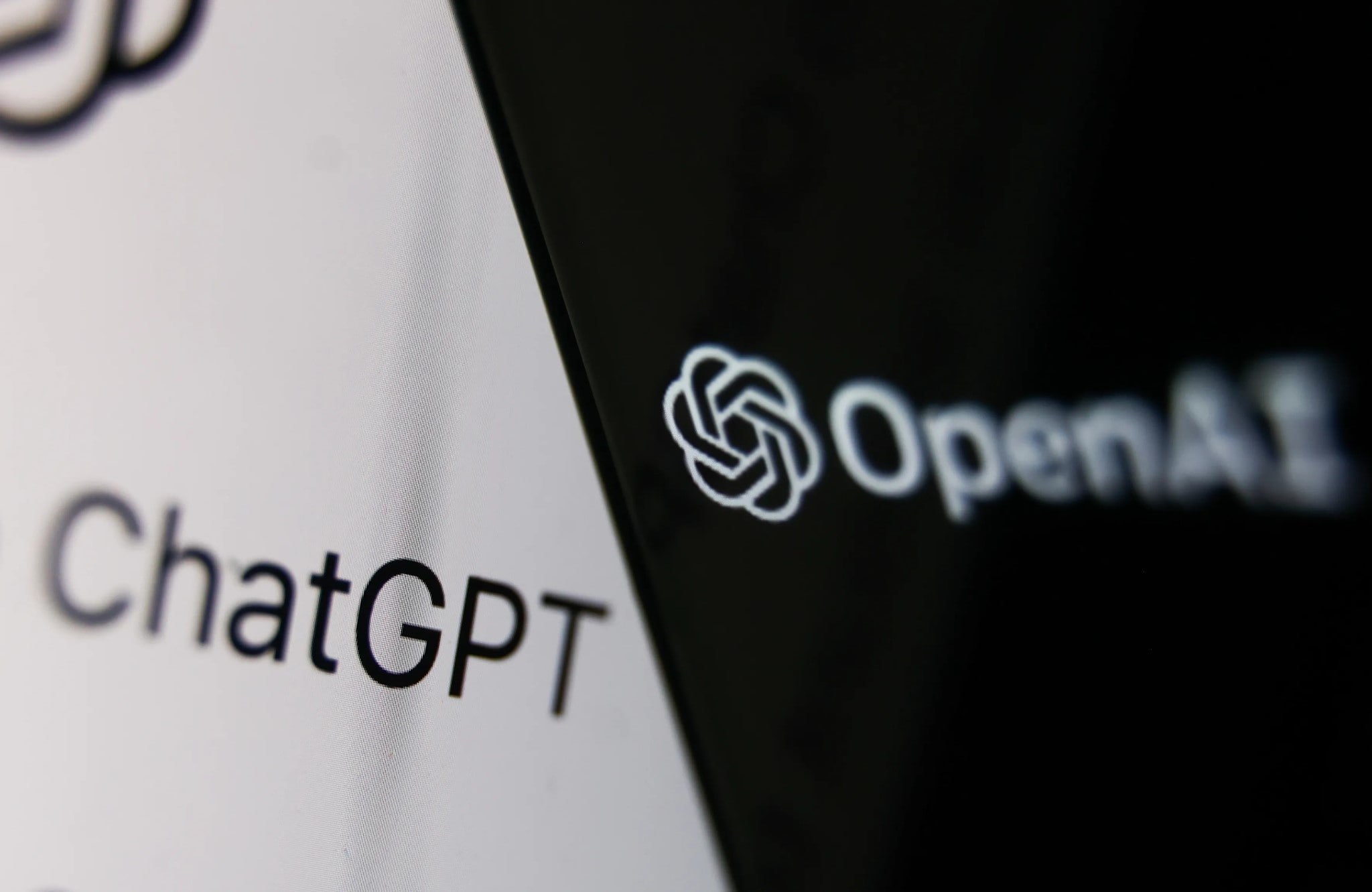
In this article
This post will explain what ChatGPT does and how it functions. It will also look at how it helps improve writing skills and go into further detail regarding using ChatGPT as a writing companion.
Part 1. How to use ChatGPT as a Creative Writing Partner?
Presently in beta testing, ChatGPT’s copywriting feature is a no-cost service that you may join up for. The site occasionally experiences capacity issues due to heavy traffic, resulting in a brief wait before logging in. However, this is rarely a significant problem. After signing up, the ChatGPT portal walks you through a few uses for the bot, enabling you to start using it immediately.
By starting to feed ChatGPT facts pertinent to your chosen topic and stringing sentences together, you may utilize it most effectively to create content most suitable for your requirements.
Step 1Just tell and offering specifics
ChatGPT functions as a conversation-like back-and-forth between both the client and the AI. Moreover, ChatGPT "remembers" the data you tell it to refer to later, much like you would in a chat with a buddy. The design also makes it simple to work on numerous projects simultaneously since it permits multiple talks to coincide through various threads.
- Just tell
Without any further information or working samples, ChatGPT will produce text that accurately fits your prompt for many typical jobs. Although it may appear to be magic, the enchantment only manifests how the AI was created. The AI can do various jobs accurately since it was taught in thousands of text instances.
You may request that ChatGPT create the opening for a podcast or supply a list of topics for a blog article. It comprehends all typical methods of asking for the same item: you may ask questions or specify the job you wish ChatGPT to do.
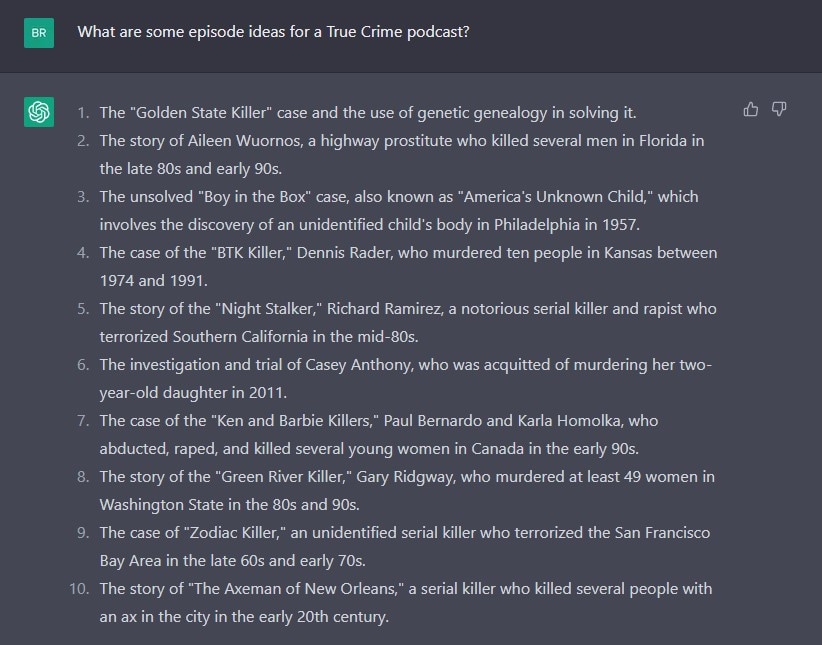
- Offering specifics
Using basic cues may produce a beautiful overall product but can also provide bland and generic audio. Try to be more explicit about the output you want the AI to produce to add some spice. You may provide information on various variables, such as length, tone, style, and target market, or you can define what you do not want and eliminate specific subjects.
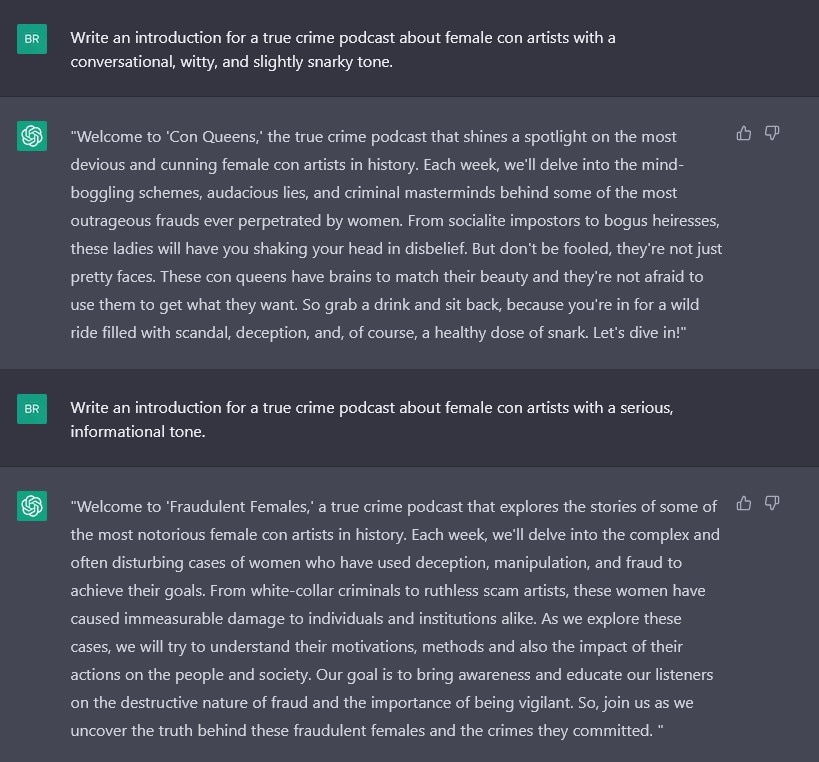
Instead of defining the style, use the identity of a specific individual in the request to shorten the adjectives.
If the prompt is not yielding the outcomes, you are looking for, consider rewording it. This can be accomplished by providing a different background or rephrasing the task's description. You can find the appropriate solution by trying a few different things.
Step 2 ChatGPT interaction
The conversational nature of ChatGPT is one of its most vital characteristics. You may ask it to give you advice, outline your thoughts, and help you through writing difficulties. Also, you may ask ChatGPT to justify its recommendations and let it offer other ways your tale can develop.
In addition to chatting as itself, ChatGPT may also talk as a particular character.
Give ChatGPT a character to portray and instruct it to speak as that figure. You may request the AI to impersonate a famous person or a figure you have created, or you can offer it a description of your target demographic to help it develop creative ideas.
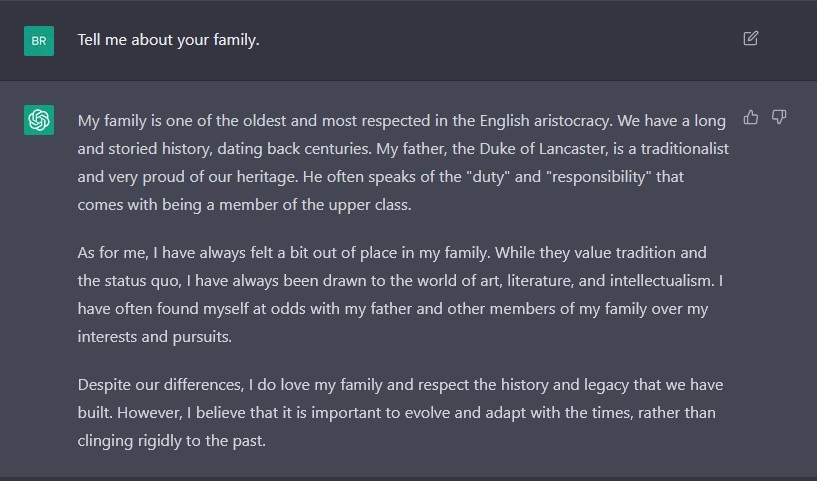
You may also give additional direction during the chat to brainstorm solutions with as much depth as possible because ChatGPT allows you to go back and read previous portions of the discussion.
Step 3 Difficult instances
You may give ChatGPT examples for activities that are trickier or more specific. These prompts, sometimes referred to as one-shot or very few prompts, let you imitate a particular style, like a host's conversational manner or a company's voice.
There are several ways you may set up your topic. If you have many instances, you can begin every one with "Instance #" and conclude it with the following instance number. ChatGPT will determine the precise look you wish to imitate.
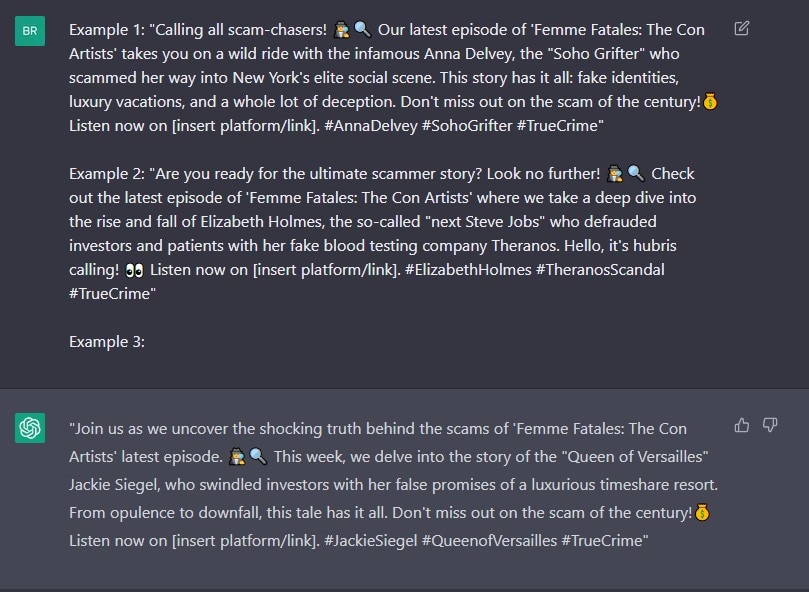
One choice is to outline the desired results before offering any examples. Creative writing by ChatGPT will combine the instances with the explanation to make sense of it.
Another option is to describe the intended outcomes prior to providing any examples. In order to generate a blend of the two, ChatGPT will blend its understanding of the descriptions and the cases.
Even a smart AI that has learnt from millions of examples may find a mood to be demanding. If you are requested to adapt your writing to a specific tone, editing will probably be required.
Step 4 Editing and recommendations
Moreover, ChatGPT is a robot editor. You may ask it to make general edits to the language you enter. It will make the necessary changes to enhance clarity, fluidity, and precision while removing regular syntax, spelling, and vocabulary mistakes. You may also tell it to add sensory information, enlarge a section to better pace, make the language more concise, or edit your writing for a certain quality, accent, or style.
Yet you do not have to believe the robot at face value. You may ask ChatGPT to explain the modifications it performed when it proposes adjustments, and it will explain what it performed to your work. You can then decide whether to take its recommendations or not.

The token limitation will sever the end of long texts when you ask ChatGPT to rewrite them. You may press the prompt "continue" when it occurs.
Filmora now offers a ChatGPT plug-in to provide a more inspirational copywriting experience.

Part 2. ChatGPT's Limitations As A Writing Partner
Regardless of the benefits and opportunities ChatGPT provides, as a technology, it continues to possess several flaws that we can frequently spot in its writing:
- Repeated words
- Basic grammatical constructions
- Inaccurate information
- Potential Google sanctions
1. Repeated words
If you have read the writings ChatGPT created, you might have noticed that it frequently repeats terms in a paragraph, sometimes more than once.
2. Basic grammatical constructions
The propensity of ChatGPT messages to begin lines with "he" or "she," which rapidly becomes repetitious, is another feature of these writings. It frequently employs the traditional sentence format of subject, verb, and object.
3. Inaccurate information
Regardless of its magnitude, the technology is built around a data collection that only goes up to 2021 and has not been connected to the Internet. As a result, answers from it can contain inaccurate data that has to be double-checked before being accepted.
4. Potential Google sanctions
The top search in the world now devalues material that it determines does not satisfy user demands or does not offer helpful information. There is no proof that Google can conclusively determine if a text was produced mechanically.
Yet, in the future, it could be attainable to react to this kind of content more successfully, much like it does with publications it deems spam.
Moreover, it takes quite a while to train big language models such as ChatGPT. Therefore, its knowledge is never entirely current. As a result, when you ask ChatGPT to substitute a person in creative writing, it may have trouble.
Conclusion
Using ChatGPT to write creatively can be an excellent method to go beyond a block. It can assist writers in jumping into a project, discovering new writing vocabularies, and developing ideas. Also, ChatGPT creative writing is open to anybody with a computer because it is free.
Nonetheless, utilizing it sensibly and being conscious of its restrictions is crucial. Your efforts will undoubtedly develop your writing skills. Remember that a creative writing robot cannot fully replace a person.



 100% Security Verified | No Subscription Required | No Malware
100% Security Verified | No Subscription Required | No Malware


